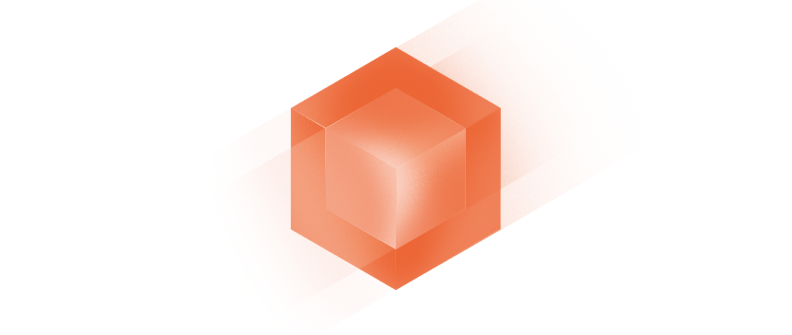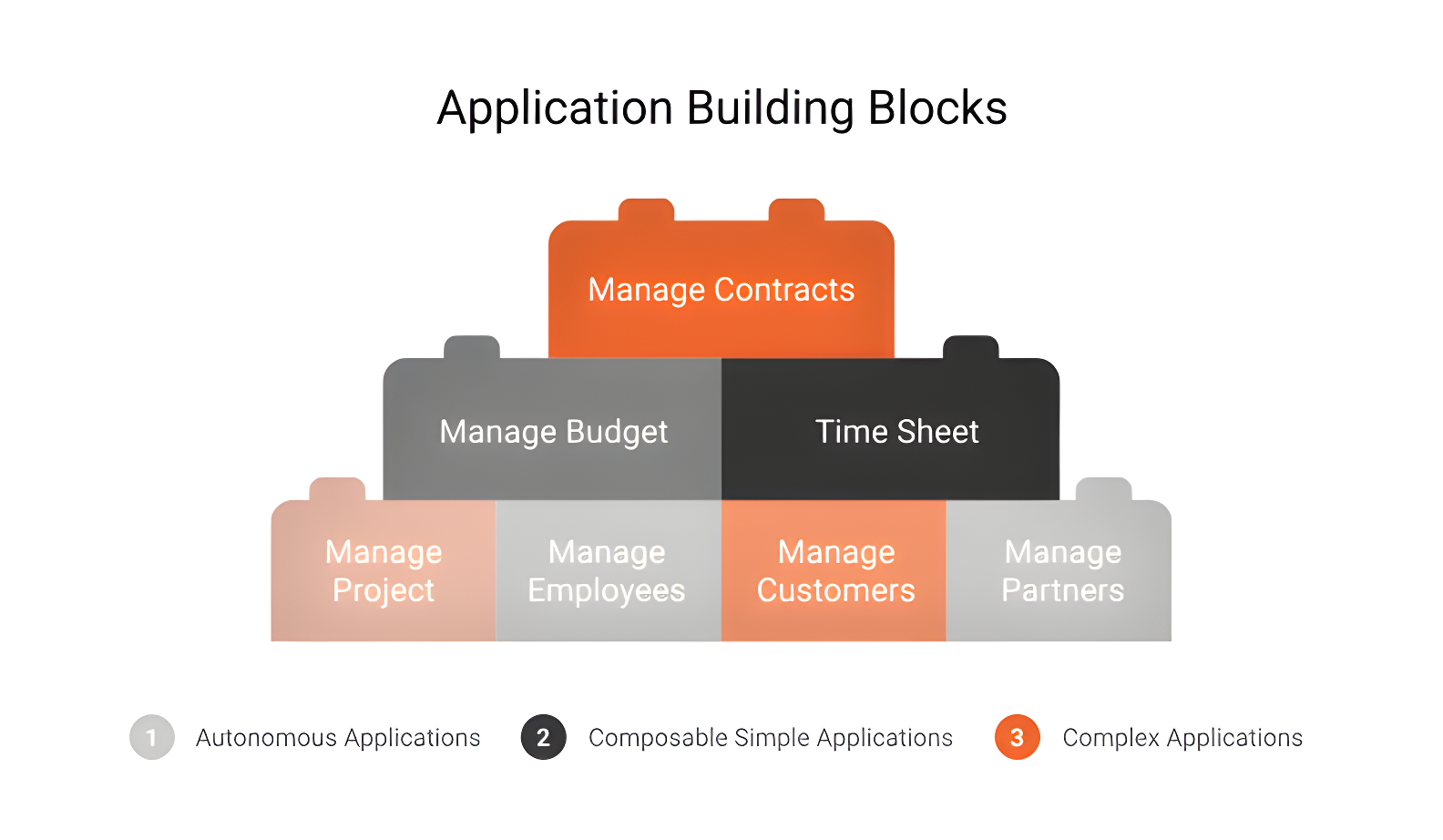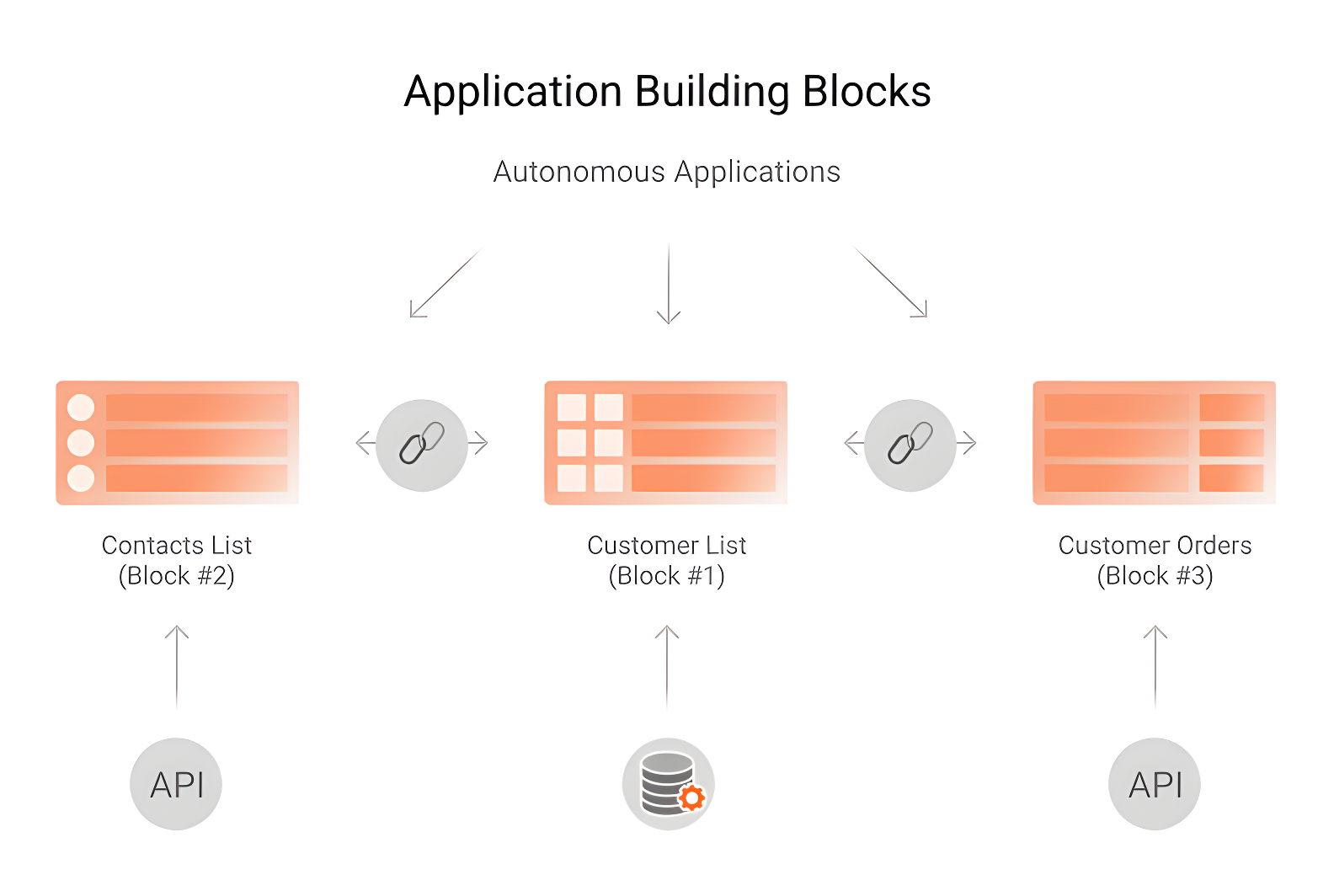Companies that use a modular structure, often aligning with Jamstack principles, have a significantly faster deployment of new features compared to their competitors.
But do you know why the composable approach brings more results and agility? The answer is that one of its key elements is the composable applications.

What are Composable Applications?
Composable applications are one of the leading technological trends for digital acceleration in our hyper-connected economy, highly dependent on software and with a lack of tech talent to keep up with the market growth.
Composable applications, as part of a business strategy, also play a significant role for developers:
They make it possible to reuse existing solutions or codes. That is, there is no need to develop from the ground up.
The composable applications are built with reusable building blocks. Remember when you played with Lego and could use the pieces to assemble, disassemble and create whatever you wanted with them? In a very simplified way, composable applications have the same principle.
As composable applications can be created by reusing pieces of code or existing solutions as if they were modules, it’s possible to build new applications by uniting smaller pieces instead of making them from scratch. The result is more agility, innovation, and adaptability for business operations.
A practical example would be a process in which you can reuse functions from existing libraries as components to build your applications.
Composable applications enable this by assembling and combining building blocks of applications that have already been adopted or developed.
Simply put, building blocks are functional units, components that have specific functions, which, when joined together, form complex and composite applications.
How do building blocks work?
The concept of composable applications is based on the possibility of breaking an application into building blocks to be reused, so they are nothing more than applications that work independently or can be linked to others.
Let’s see an example of how building blocks can work. In the image below, there’s a set of building blocks working in different ways and with specific functions: as autonomous applications or, when united and linked, as composite and complex applications.

- Autonomous applications: each application encapsulates specific business capabilities such as contract, customer, project, and related data management.
- Composable simple applications: applications composed by leveraging interactions between various autonomous applications to achieve business functionality.
- Complex applications: composite applications that bring together functionality from various simple and autonomous applications.
Since composable applications are made of reusable parts, they can be split into pieces. Here’s an example.

The example above is a composable application that comprises three autonomous linked applications: one to list contacts, another to list customers, and the last to list customer orders. Each one uses a different method to fetch data, but the front-end component used to assemble the page display is the same, adapting to the content delivered by the APIs.
Each of these applications is independent and can be run on its own or linked to others to create new ones. Still, the coolest part is precisely the power that the development platform you choose can give you to build them and allow you to reuse them as building blocks to create powerful applications more simply—an edge computing platform like Azion’s, for example.
An important detail: in addition to the possibility of being united, these pieces can transmit data to each other, so they look like a single application—another fundamental concept behind composable applications.
And unlike monolithic applications, which focus on a specific number of outcomes and usage patterns, composable applications enable a wide range of use cases and outcomes.
What are the benefits of composable applications?
What is the value of adopting composable applications in an organization? Here are some of them:
1. Enable business agility
Composable applications support faster builds, configurations, and deployments, accelerating the time-to-market and the path to financial value when building or integrating digital ecosystems.
2. Enable citizen development
Composable applications are a way to overcome developer shortage through no-code/low-code tools, which allow even non-technical employees to create software without writing code.
3. Improve developer experience
With composable applications, developers can focus on creating a first-class user experience while the business manages access to the right content in the right context for the right customer. Any systems, regardless of whether they scale or not, can be included since composable applications give developers the freedom to set up the APIs required for their applications.
Where did the need for composable applications come from?
The need came from a succession of events—such as the Covid-19 pandemic, highly rapid changes, and the hyper-connected economy—that exposed how everything is intimately connected and how situations on the other side of the world affect us almost instantly.
This scenario affected business operations. Today, companies that want to be prepared for the digital-first footprint of total digital transformation need to offer innovation and react quickly to respond to acceleration and adapt to market changes and demands.
In a world where everything needs to be digital and needs software, reconfigurable and extensible composable applications appear as a fundamental part of the digitalization gear since traditional monolithic applications are complex, challenging to maintain and update, and usually require a lot of time and effort to develop and maintain. Furthermore, they are generally less scalable and flexible, making it difficult to adapt to changes in the business environment.
In this scenario, many companies seek to implement what Gartner calls composable enterprise, a type of organization that delivers results by adapting business requirements to the pace of market changes.1
And this is part of the composable business model2, which allows traditional companies to modernize their IT roadmap and maintain operations through solutions that orchestrate the application ecosystem in a fully integrated manner, safely and without wasting time-to-market.
Composable application use case
Security is often a major concern in many organizations, so let’s check a use case of a composable application for a security solution on Azion Web Platform.
An example is a user authentication application represented by an Edge Function in Azion’s Platform, which verifies that the user is valid using JWT Tokens and authorizes them to follow the flow. This function can be combined with another Edge Function that implements yet another composable application.
Below there’s the code for an Edge Function API endpoint that receives a POST with a user’s login data and, with that, accesses a database, checks if the client exists, and, if so, returns a session token of the user.
async function handleRequest(event) { let form let responseBody let statusCode = 200
try { form = await event.request.json() } catch (err) { responseBody = JSON.stringify({ errorCode: 'form001' })
statusCode = 400 }
if (!form || !form.login || !form.password) { responseBody = JSON.stringify({ errorCode: 'setOwnIDData002' })
statusCode = 400 }
if (!responseBody) { try { let loginData = await fetch('https://your.db.service', { body: JSON.stringify(form), headers: { accept: 'application/json', authorization: `Bearer ${event.args.fauna_token}`, 'content-type': 'application/json' }, method: 'POST' })
if (login_data) { responseBody = generateJWT(loginData) statusCode = 200 } else { responseBody = JSON.stringify({ errorCode: 'userNotFound' })
statusCode = 400 } } catch (err) { responseBody = JSON.stringify({ errorCode: 'login001' })
statusCode = 400 } }
return new Response(responseBody, { headers: { 'content-type': 'application/json' }, status: statusCode })}
addEventListener('fetch', (event) => { return event.respondWith(handleRequest(event))})More powerful composable applications at the edge
Azion works continuously to offer tools that facilitate and speed up the work of developers, which is why our edge platform was developed to make it possible to build or reuse applications in a simple and fast way, with no vendor lock-in.
The edge enables new ways for developers to create more personalized, efficient, and scalable applications and accelerate business opportunities. With Azion, you focus on your needs, and we take care of everything else.
You can create or reuse composable applications from existing free libraries on our Marketplace and third-party applications or libraries, using them in a new or existing application on our platform. Check out some examples here in our documentation.
If you’re not using our Platform, you can try it for free today!
Sign up now and use the $300 in service credits we provide to start building and reusing applications on Azion’s Platform.